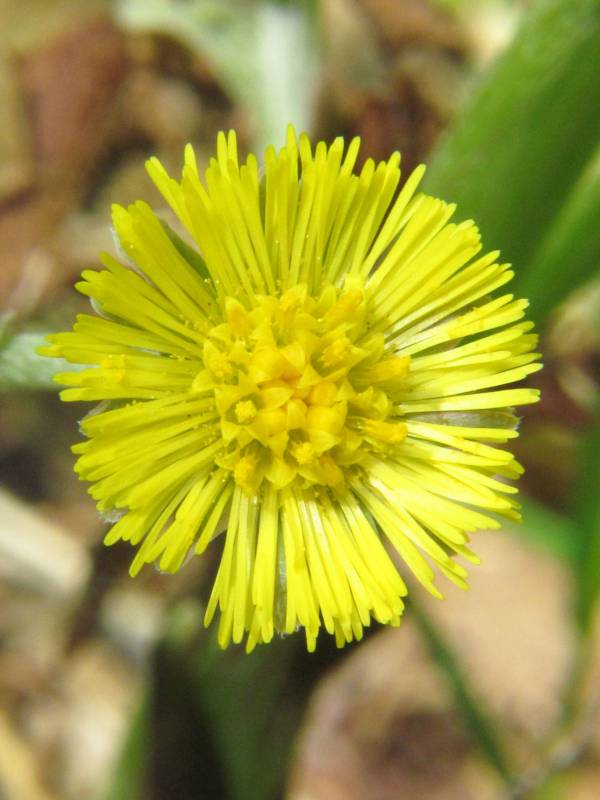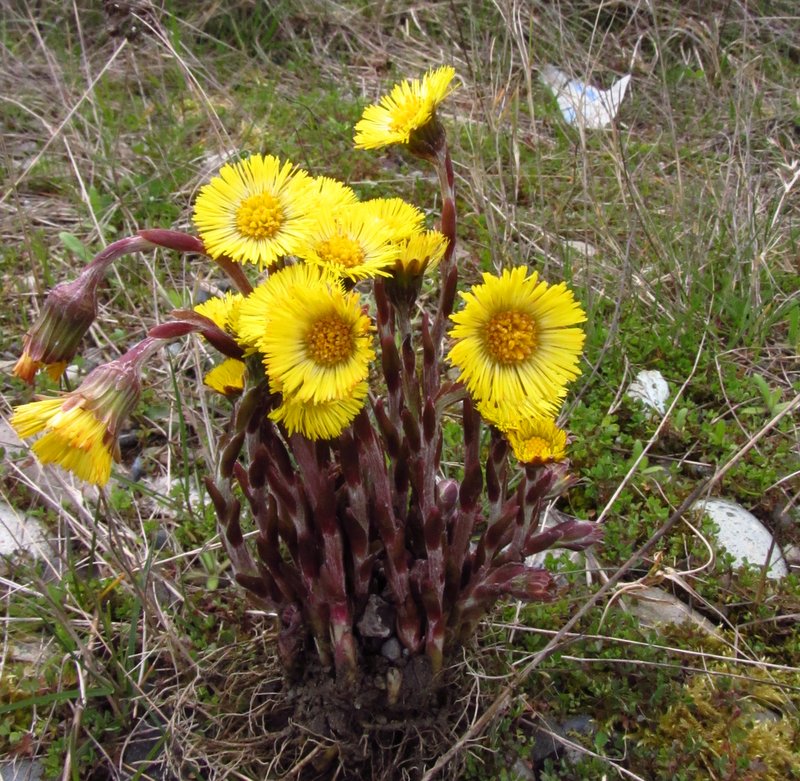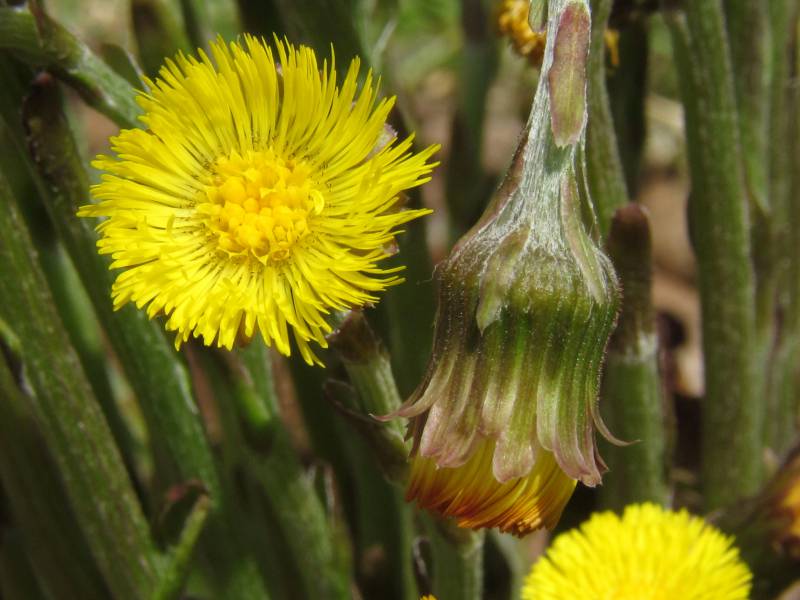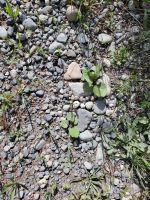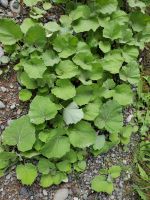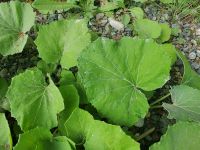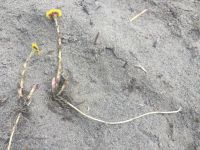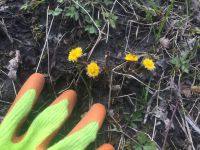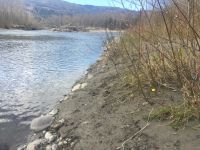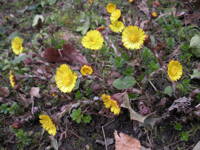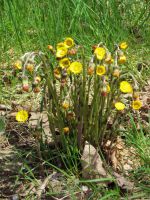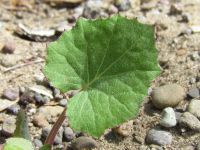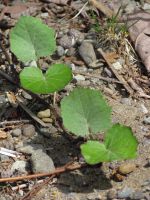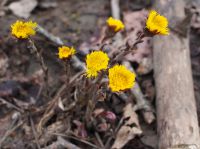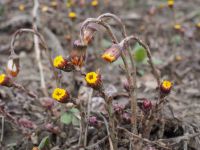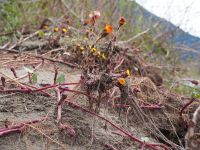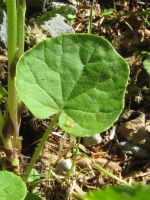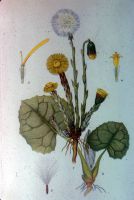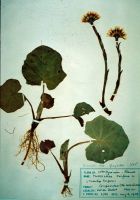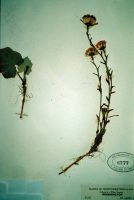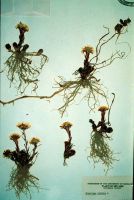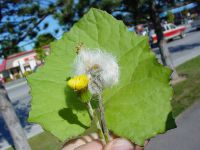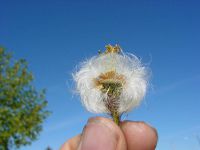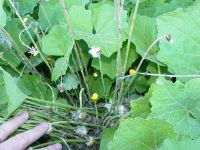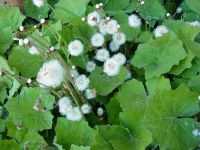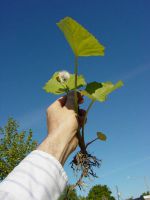Distribution: Occurring west of the Cascades crest in lowland western Washington; British Columbia to Washington; also from the Great Lakes region east to the Atlantic Coast.
Habitat: Roadsides, fields, lawns, wastelots, and disturbed forest understory ta low elevations.
Flowers: March-May
Origin: Introduced from Eurasia
Growth Duration: Perennial
Conservation Status: Not of concern
Pollination: Bees, flies, beetles, wasps
Rhizomatous perennial, 0.5-5 dm. tall, with large basal leaves and scaly-bracted stem, the scales purplish.
Leaves basal, long-petioled, developing well after the flowering stems, the blade cordate to sub-obicular, with deep, narrow sinus, toothed and shallowly lobed, 5-20 cm. long and wide, green and glabrous above, permanently white-woolly below.
Heads solitary, large; involucre 8-15 mm, its bracts herbaceous, in a single series and equal; rays pistillate and fertile, pale yellow, numerous, short and narrow; disk flowers yellow, perfect but sterile; pappus of capillary bristles.
Publication: Sp. Pl. 2: 865. 1753.
PNW Herbaria: Specimen records of Tussilago farfara in the Consortium of Pacific Northwest Herbaria database
WA Flora Checklist: Tussilago farfara checklist entry
OregonFlora: Tussilago farfara information
E-Flora BC: Tussilago farfara atlas page
CalPhotos: Tussilago farfara photos

